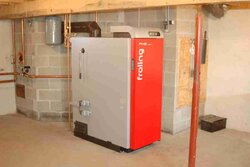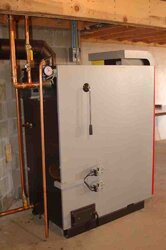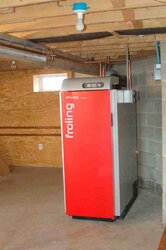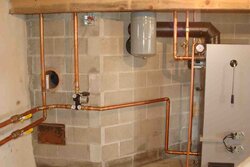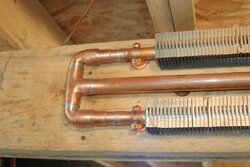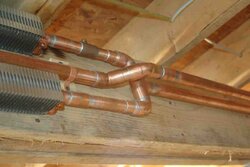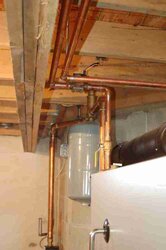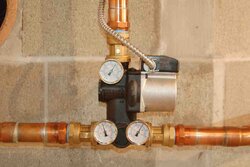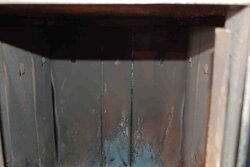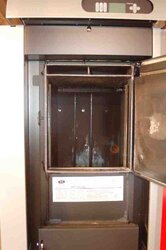Nice pictures. Glad to hear you seem to be impressed with performance.
I'm in the process, although much slower, of installing the same boiler.
Do you think 1000 gal is enough storage?
I would like to use my system year round for heat in cold months and DHW in warm months.
My quick math assuming a few things, such as 20,000,000 BTUs per cord of mixed hardwoods, a Delta T of 50, a realistic efficiency of only 80%, and a realistic full load of 6 cu. ft of fuel.
6 cu ft of wood = 937,500 BTUs x 80% efficiency = 750,000 BTUs per load.
750,000 BTUs / 8.33 lbs per gal / 50 delta T = 1800 gals of storage to burn a full load without the house calling for heat.
It seems to me that this boiler, with it's ability to run at peak performance throughout a full burn, could easily "overrun" 1000 gal of storage.


